Orcs and Gnolls
Wandering Monsters
By James Wyatt
In a recent Rule-of-Three article,
Rodney Thompson talked a little bit about our approach to monster design. That
column was well-timed, because we’re starting a big push on monsters right now.
The D&D Story Team is leading the charge on this effort for the moment, and
this column is a place for us to share what we’re thinking so that we can
solicit your input.
Our job right now has very little to do
with monster statistics. We are tasked with making sure that everyone is in
agreement about the core story idea of D&D’s most important monsters.
We’re going to be producing one-page documents for each of those monsters, and
each page will describe what they are, what they’re good and not-so-good at,
how they live, how they fight, what their special abilities are, and what they
look like. The idea is that we can hand these documents over to the design
team, and the designers can provide statistics that express all that
information in the context of the D&D Next rules.
At the same time, we can also give these
documents to a team or a licensing partner working on a D&D board game,
digital game, or T-shirt design, so they can take that information and find the
right expression of those monsters for their own particular media. In the case
of T-shirt design, we just need to make sure the dragon on the shirt is
recognizable as a D&D dragon. But for digital games and the like, when
you’re fighting an orc in any D&D game, you should recognize it as a
D&D orc—not just because it looks like an orc, but because it acts like
an orc.
So this column is a way for us to make
sure we’re not going wildly astray. I have a lot of issues and questions I want
to explore and get your opinion on as this column continues—we’ll talk about
goblinoids, wereboars, metallic dragons, locathah, yuan-ti, devils, wolverines,
and more before we’re done. It seemed to me that a good place to start was with
theRule-of-Three article from July 3, 2012 .
That's not always going to be the case,
though; many monsters, especially among the humanoids, are likely to be very
similar in their numerical statistics. As such, they may need something more
exceptions-based to differentiate them from one another, so that you feel the
difference when you're fighting an orc as opposed to a gnoll.
—from Rule-of-Three: 07/03/2012
The various humanoid races were a
starting point for our discussions, and orcs and gnolls make a good example of
the sorts of things we’ve been talking about. Let’s start with orcs.
Orcs
Orcs are savage, both in the sense of
being fiercely violent and untamed, and in the historically loaded sense of
being uncivilized and primitive in their technology. They’re good at
offense—when an orc hits you, you’re going to feel it. They use big weapons
such as greataxes or greatclubs. And they’re known for their fury in combat,
launching a ferocious and violent assault against their foes. They’re strong
and hardy—you’d expect orcs to have high Strength and Constitution scores—but
they’re not very smart (low Intelligence).
They’re not so good at defense. They rely
on their sheer ferocity to keep them going despite their wounds, rather than
wearing heavy armor to protect them from wounds. Their choice of armor ties to
their primitive technology as well: you expect to see orcs in piecemeal armor,
such as hides ornamented with plates and belts stripped from fallen foes. The
armor serves as a souvenir of past successful battles as well as protection.
Similarly, orcs aren’t very good at
organization. They’re chaotic evil, gathering in loose bands or tribes where
the strongest rule and the weak are bullied or killed. They do have a modicum
of social order, with a rough hierarchy based on relative strength, and they
use ritualized combat to resolve challenges. In combat, it’s every orc for
itself, with each orc more interested in earning personal glory than in
securing victory for the group. They hate sunlight, and they fight less
effectively in daylight.
Orcs raid neighboring settlements for
treasure, supplies, and slaves. Their bands leave trails of destruction,
slaughtering and burning everything in their path. Those unlucky enough to be
captured by orcs are put to work, and these slaves work until they die from
exhaustion or starvation.
The bulk of an orc band is made up of
common orcs with little in the way of special abilities. Powerful individual
orcs with special abilities might include an Eye of Gruumsh (an orc champion
devoted to the one-eyed orc god), or a cleric or shaman who serves any one of
the orc deities. Other uncommon individuals in a band include orogs (larger, elite
orcs) and berserkers, who turn their race’s natural ferocity into a thing of
terror on the battlefield.
To borrow a turn of phrase from the
original AD&D Player’s Handbook, “Orcs are fecund and
create many cross-breeds, most of the offspring of such being typically
orcish.” In other words, you can also expect to see a number of very orclike
half-orcs fighting among a tribe of orcs. Ogrillons (half-ogre orcs) are a
particularly fierce breed, and half-orcs with human parentage can put their
superior intelligence to good use in leading groups of orcs, though they must
constantly prove their strength and ferocity to defend their positions against
challengers who see them as weak. As well as half-orcs, it’s common to see
ogres, boars, and wolves as allies to an orc band.
Gnolls
Gnolls have certain characteristics in
common with orcs. Both races are predominantly chaotic evil, and thus lacking
in structured social organizations or regimented military forces. Gnolls gather
in family groups (packs) that are led by the strongest individual, which is
sometimes a female. Both orcs and gnolls tend to be strong and pretty dumb.
They both might have champions who fly into berserker rage during combat, and
they wear hides and scavenged pieces of armor.
On the other hand, gnolls have a lot to
differentiate them from the savage orcs, and these differences are largely tied
to their close association with hyenas. Hyenas are actually pretty disturbing
animals. The strange laughing sound they’re known for can be really eerie.
They’re also a strange example of convergent evolution: an animal related to
cats and mongooses that looks more like a dog. Strange anatomy, the way they
mark their territory—hyenas are just strange. I suspect that’s why folklore
tends to associate them with witchcraft and grave robbing.
Gnolls are strange and loathsome, too,
largely because of their close association with the demon prince Yeenoghu.
They’re demon worshipers, so they’re not just savage like orcs, they’re
downright depraved. Gnolls kill and dismember their foes because they enjoy it.
According to the 2nd Edition AD&D Monstrous Manual, they
“favor intelligent creatures over animals [as prey] because they scream
better.” They offer blood sacrifices to their demon prince, and they’re sometimes
rewarded with the aid of a demon for their next raid or assault.
In addition to their interactions with
demons, gnolls often have hyenas (or the giant dire hyenas) as guard animals or
companions, treating them as members of the same pack. Occasionally multiple
packs join together for large raids, though fighting between members of
different packs is common during these raids, particularly when they squabble
over food. A town or village that suffers such a raid is an eerie and
terrifying place: blood is splattered and smeared over floors and walls, and
only scraps of bodies remain uneaten. Any residents who survive the attack are
dragged back to the gnolls’ home and tortured, sacrificed to Yeenoghu, or
simply eaten when the gnolls have regained their appetite.
A few other things that differentiate
gnolls from orcs: Gnolls are more agile (high Dexterity) and poor leaders (low
Charisma). They have accomplished archers, partly because of that high
Dexterity. Gnolls are cowardly, so they’re apt to flee from a fight that turns
against them. They prefer hunting in outdoor environments (having no
difficulties in sunlight), though they make their lairs in caves.
Unusual gnolls in a pack might include
the beastmasters who work most closely with the hyenas, specialized archers or
rangers, demon summoners, and sacred warriors believed to be imbued with the
killing spirit of Yeenoghu.
What Do You Think?
Head over to the Wizards of the coast
site and take a survey about this article, they need the feed back people so
help them create a great next version of D&D! HERE




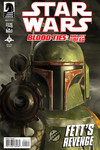

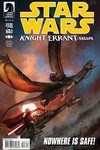



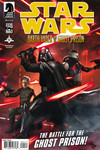
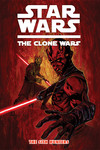
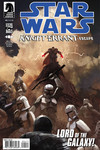

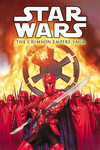
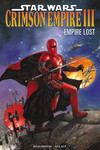
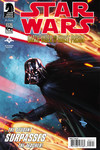

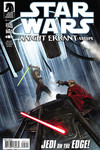


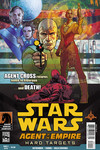

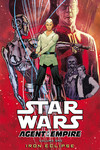
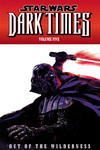
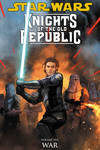

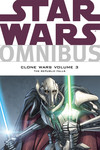





 San Diego, CA (July 13, 2012) – XENOZOIC TALES by Mark Schultz is a modern masterpiece. Set in a post-apocalyptic future, one now populated by dinosaurs and other incredible beasts, mankind is desperately trying to reclaim what was once theirs. Starring ace mechanic Jack Tenrec and the lovely and brilliant scientist Hannah Dundee,XENOZOIC TALES is a rollicking story filled with high adventure and nail-biting suspense.
San Diego, CA (July 13, 2012) – XENOZOIC TALES by Mark Schultz is a modern masterpiece. Set in a post-apocalyptic future, one now populated by dinosaurs and other incredible beasts, mankind is desperately trying to reclaim what was once theirs. Starring ace mechanic Jack Tenrec and the lovely and brilliant scientist Hannah Dundee,XENOZOIC TALES is a rollicking story filled with high adventure and nail-biting suspense.